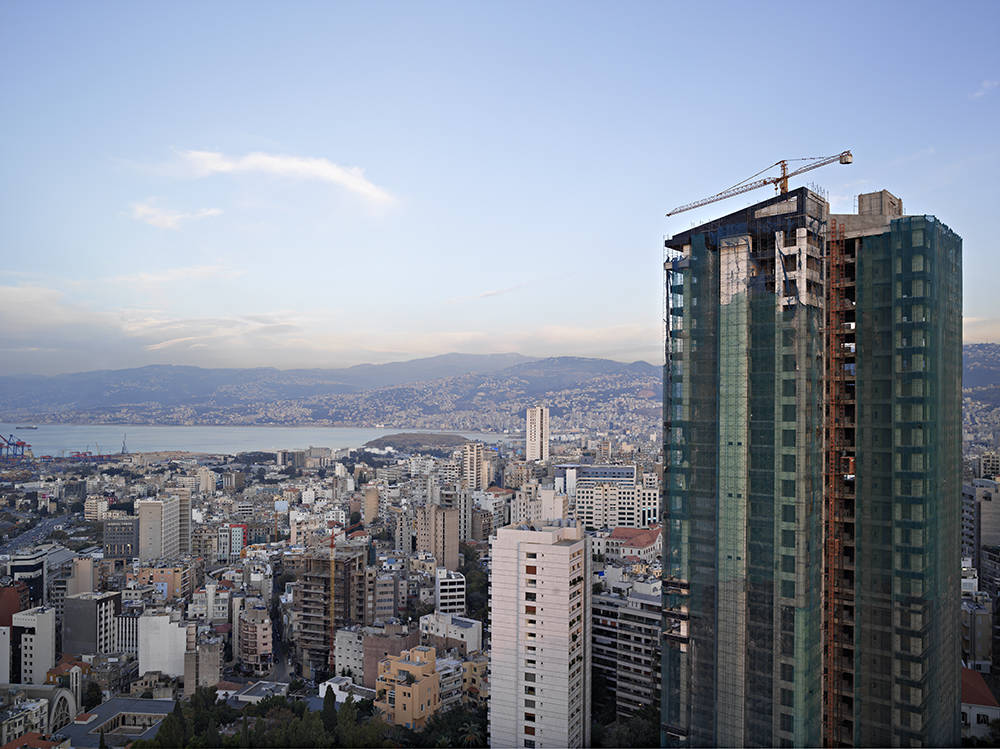photo by Pietro Savorelli
Charbel Maskineh: What is your opinion on the quality of the urban space in the historical centre and in the rest of the city?
Maroun El-Daccache: The urban space of the old city centre of Beirut will by now be conditioned by icons of contemporary architecture, designed by world-famous architects as Moneo, Steven Holl, Jean Nouvel, Arata Izosaki, Zaha Hadid….and the purpose of this is to give the city and its society an internationally competitive modern and contemporary image (this reminds me, in a certain sense, of the grandeur of the French mandate, Beirut modern capital city).
But by now this architecture of icons has failed to realize its political vision in other cities, as solution to the urban problems associated with the new generations. For instance Dubai and Abu Dhabi, and other Gulf cities, reflect this reality: they are cities without any new idea, either on an urban or on an architectural level. They could, on the contrary – and the same is true of the reconstruction of Beirut – have triggered a debate on contemporary architectural, urban and territorial issues.
In my opinion, the challenge is to find a solution, with this new architecture, to real and serious problems, that nobody wants to discuss by now. We will have to rely on the new generation to recreate an urban reality that meets the requirements of the future of our cities, and as a consequence work with town plans that deal with the needs of our society. If not, these architects will become mere design objects without any architectural meaning, just like plastic surgery.
C.M.: Why do we Lebanese have no confidence in our own architects?
M.E-D.: Because we believe in importation, everything is imported and our culture, the master plan of the historical centre, is a reproduction of a familiar model: the block, speculation… The reconstruction after the war could, on the contrary, have represented an opportunity to transform the centre and consequently the city, with innovative ideas. It is this approach that is missing in the current plan.
C.M.: Don’t you think that despite all the criticism against Solidere, the city centre is the only planned part as compared to the rest of the city?
M.E-D.: Several master plans have been prepared for Beirut, but the problem is that they have only been partially respected, now with Solidere the plans are implemented because they are the result of a single political vision. The city of Beirut, on the contrary, is an amalgamation of several urban realities where private operators wield a strong influence on the speculative development of the planning.
The plan for the recovery of the centre is a very classical one, as I just pointed out. The critical aspect is not architectural. The quality of the new buildings is undoubtedly high. The city centre is isolated; it is not integrated with the different parts of the city. An urban intervention on this scale and of this kind should have been the product of a revolutionary vision, if the city is to succeed in enjoying a competitive position in the Mediterranean area.
As it is taking form at present, the reconstruction is configured as a new city of skyscrapers and towers that generate an urban phenomenon comparable to the urban sprawl of the peripheral areas. What will the final image of the city be like? Another gulf city...?
C.M.: What do you mean by “it is not integrated with the different parts of the city”?
M.E-D.: What I mean is that the city has, especially in the last fifteen years, been developed in a very chaotic manner. The plan of the reconstruction of the historical centre has represented a closed unit within a more complex urban dynamic, which it has failed to reckon with. Those who live in the adjacent neighbourhoods, for instance, still use their car to reach the centre because the latter, in its redesigned state, forms a ring closed on itself. The reconstruction could have reflected on and embodied a new urban vision for a new society, to be born after decades of suffering and war. And this is the challenge it has failed.
Maroun El-Daccache- Degree in Architecture, Istituto Universitario di Architettura di Venezia IUAV University, Venice 1987, PhD (Research Doctorate in Architecture), IUAV University, Venice 1992.
Part-time Professor in the Department of Architecture at the Lebanese University (1992-1993); Part-time Professor in the Faculty of Fine Arts at University Saint Esprit, Kaslik, USEK (1992-1997); Thesis Advisor in the Department of Architecture at the Lebanese American University (1995-1997); Editorial Director of “USEK ARTS” Review of Architecture (1997-1999); Full-time position in the department of Architecture at the Lebanese American University (since 1998); Final Project Co-Advisor at different Architectural Institutes, Schools and Universities in France, Italy, Germany, Spain and Poland (since 1998); Project manager for the Urban Planning Institute at the Lebanese American University (2000-2003); Coordinator of a collective research on the ideologies of the urban morphology of Beirut (2001-2003); Director of the Urban Planning Institute at the Lebanese American University (2003-2006); Chairperson of the Department of Architecture and Design at the Lebanese American University (since 2005); Member, Teaching Advisory Board, Villard International PhD, Venice University (since 2007).
He starts his professional activity since 1987 in Venice and on 1993 in Beirut. His work was published in different architectures magazines (Local and international) and was exhibit on several national and international exhibitions. His participated on several international and regional symposium and he have different texts and articles related to the Mediterranean City. He was visiting critic in several Universities, Seville, Granada, Las Palmas de Gran Canarias, Venice, Trieste, Granada, Cracow, Berlin, Tunis, and Morocco.




